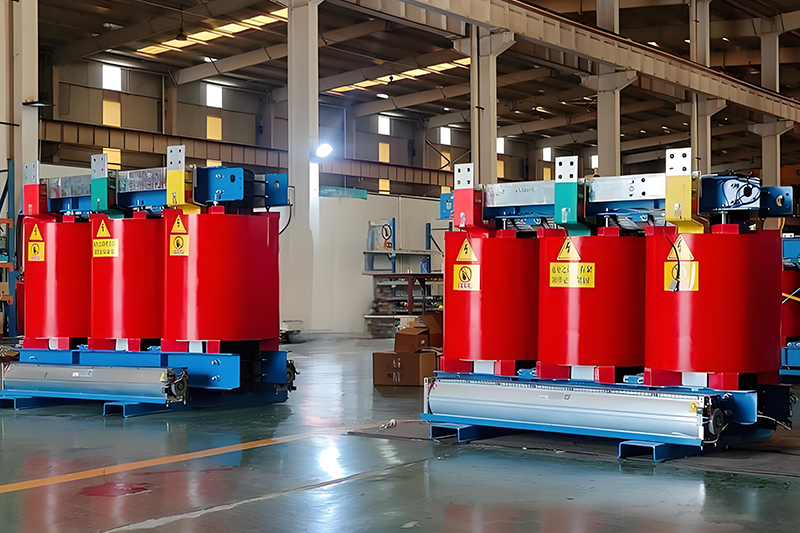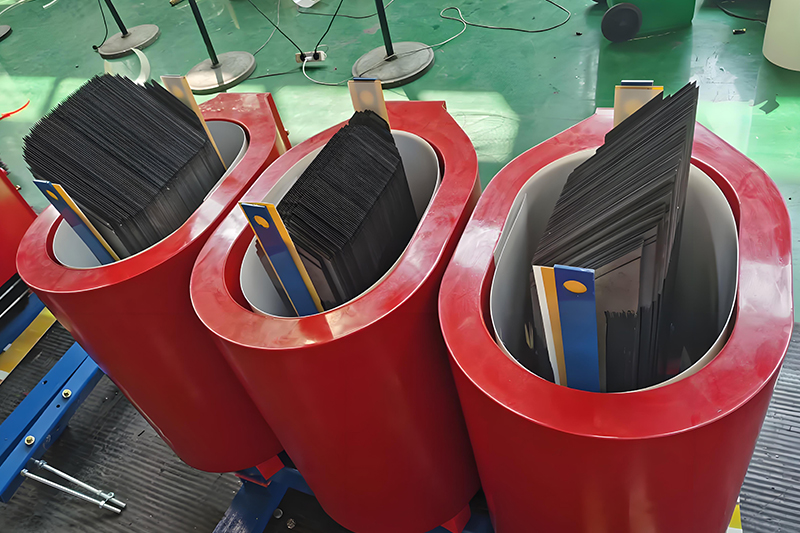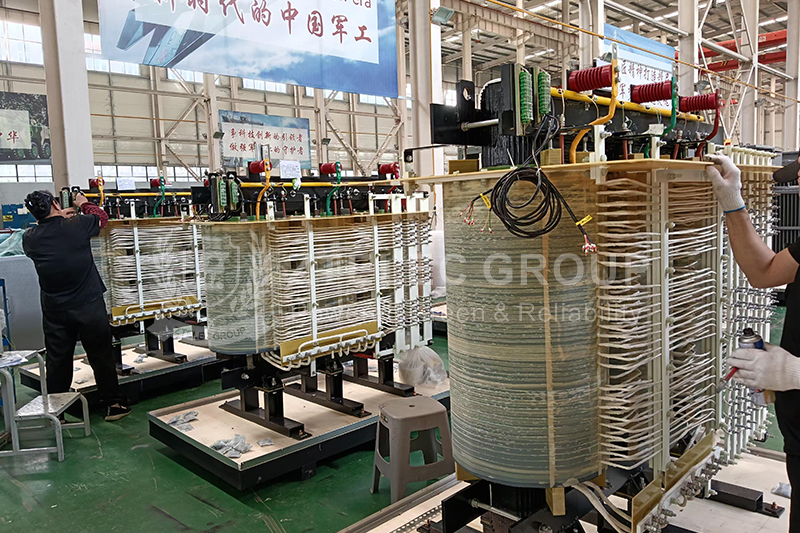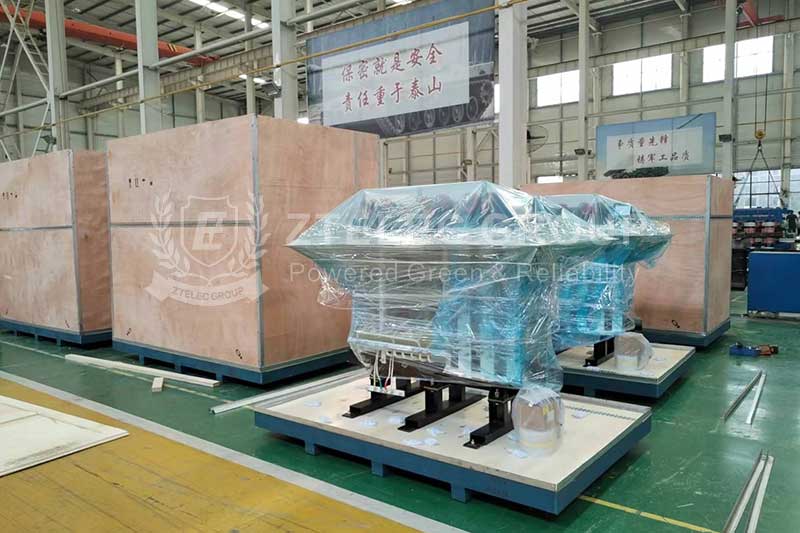Key Maintenance Points for Dry-Type Transformers: Complete Guide
Dry-type transformers play a vital role in modern power systems, offering a safe, oil-free solution for power distribution. These transformers rely on natural or forced air cooling to manage internal temperatures. To ensure reliable and long-term performance, a strict maintenance schedule must be followed by trained personnel. This article outlines key daily, periodic, and special-condition maintenance practices to maximize the safety and service life of dry-type transformers.

Daily Inspection and Real-Time Monitoring
Temperature Monitoring
Regularly monitor winding temperature using built-in sensors or infrared thermometers. Ensure values stay within insulation limits (e.g., Class F ≤ 155°C). Verify that the cooling fans activate and stop within the correct range (typically 80–100°C to start and 60–80°C to stop). Inspect temperature sensors and controllers for proper operation to prevent system failure due to inaccurate readings.
Visual Inspection
Remove dust and debris from the surface and air passages to maintain efficient heat dissipation. Check insulators and winding surfaces for cracks, discoloration, or discharge marks. Tighten bolts, terminals, and other connectors to prevent hot spots caused by loose contact points.
Sound and Vibration Monitoring
Listen for consistent operating sounds. Unusual noises—such as crackling or metallic clangs—may indicate core or winding issues. Investigate immediately. Monitor for abnormal vibrations and inspect the mounting base and internal component stability.
Environmental Control
Ensure transformers are in clean, well-ventilated spaces. Maintain ambient temperature ≤40°C and humidity ≤90% to avoid condensation and insulation degradation. Keep the equipment away from corrosive gases and excessive dust.
Periodic Maintenance Tasks
Cleaning and Surface Maintenance
Every 3 to 6 months, clean external and internal components with dry compressed air or a vacuum. Use anhydrous alcohol to wipe tough stains—never apply water or wet cloths to windings to avoid short circuits or insulation damage.
Insulation Resistance Testing
Annually test insulation resistance using a 2500V megohmmeter. Values should be ≥1MΩ per kV. Compare results with previous data. If readings drop by more than 50%, investigate insulation aging or degradation immediately.
Electrical Connection Inspection
Tighten all electrical connections, including terminals and grounding wires. Inspect for discoloration, oxidation, or deformation. Use infrared thermal imaging to detect abnormal hot spots in connectors, reducing thermal failure risks.
Cooling System Maintenance
Check fans for proper function and lubricate bearings every 1–2 years. Clean air filters to maintain airflow efficiency. Malfunctioning cooling systems can lead to overheating and insulation failure.
Core and Clamp Inspection
Ensure the transformer core is grounded at only one point. Multiple grounding points can cause circulating currents and overheating. Inspect clamps and structural stability during outages.

Maintenance Under Special Operating Conditions
Overload Operation Management
Avoid long-term overload operation. During short-term overloads, monitor temperature rise carefully using the manufacturer’s load-temperature curve. Overheating accelerates insulation aging and shortens equipment life.
Moisture Prevention
In idle or humid environments, install KT-type heating devices to prevent condensation. Moisture can cause insulation breakdown, leading to dangerous failures.
Post-Fault Inspection After Short Circuits
After a short circuit, check the windings for deformation using DC resistance measurements and frequency response analysis. This ensures safe operation before restoring power to the transformer.
Data Logging and Trend Analysis
Keep detailed records of temperature, insulation resistance, and load data. Analyze trends to identify early warning signs of potential faults. Use this data to inform predictive and preventive maintenance decisions.
Proper maintenance of dry-type transformers requires a combination of real-time monitoring, routine inspection, and preventive measures under special conditions. Following manufacturer guidelines and industry standards ensures safe, stable, and efficient operation. For critical procedures, professional technicians must be consulted to avoid operational risks. With disciplined care, the lifespan and performance of dry-type transformers can be significantly enhanced.
- more+releated article
- 2026-01-04Common Power Transformer Faults: Causes, Solut
- 2025-12-312026 New Year Holiday Notice
- 2025-12-31Operation, Maintenance, and Service Life Manag
- 2025-12-30How to Select a 100 kVA–500 kVA Distribution
- 2025-12-29The Impact of NHN NMN Composite Insulation on
- 2025-12-26Practical Application of GPO-3 Insulation Boar
- 2025-12-2510kV Transformer Replacement Timeline: Install
- 2025-12-25Low Smoke EN45545 GPO3 UPGM203 Laminated Board
- 2025-12-24Merry Christmas — ZTelecgroup Christmas Cele
- 2025-12-24How to Select a Suitable 50kVA–500kVA Distri





